At its inception, the Internet was nothing but a bunch of text documents connected with hyperlinks. Today it’s the greatest information database and a place for finding opportunities for those who know how to use them.
From a business perspective, the greater your client base, the better your projects‘ chances of success. In other words, how well your business is doing is proportional to the number of active users/clients you have.
Nowadays, it’s almost impossible to think of doing any kind of business without using the Internet. Having that in mind, one question arises, which would be “how to grow my business on the Internet?”. After all, you could have the most polished product in your field of work and still be buried under the sheer number of competitors you have to go against.
Sure, you have to deliver high-quality products to succeed, but you also have to present them to a great number of potential clients. To achieve that goal, you have to ensure that you have high rankings in web searches. In other words, when someone searches the web for topics related to your business, your website should be among the first links to appear. The higher you appear in results, the more trusted and relevant you seem. That’s just the way people nowadays look at search results.
Luckily, there is a nice and convenient way to get better rankings. It is called Search Engine Optimization or SEO, in short!
What Is SEO?

SEO is made up of three parts: the quality of traffic, the quantity of traffic, and organic results.
- Quality of traffic – This is the number of people who are truly interested in your product or service. In other words, when people search for terms closely related to your kind of business, it increases the traffic to your site. This would be thought of as the quality of traffic. Reaching the right target group is the key to success.
- Quantity of traffic – Once the quality is there, you have to keep an eye on the actual number of visitors viewing your site. Of course, the greater the number, the better.
- Organic results – From time to time, you might see a little icon that says “ad” or “ads” next to a search result. Any search result without that icon is called an organic result. In other words, organic results are not and cannot be influenced by paid ads.
How Does SEO Work?

Before we jump into applying SEO principles to our sites, it would be a great idea to familiarize ourselves with how SEO works behind the scenes.
Whenever you use a search engine to look something up, that search engine utilizes something called a crawler. Crawlers are information gatherers that scan all the content that can be found on the Internet. A search engine builds an index when all the valuable information is brought back to it by the crawlers. Then that index is given to an algorithm that tries to match the data with your queries.
When it comes to the algorithm itself, there are many important factors, according to experts. The most important factors are the number of links leading to a domain, page and trust rank, and content quantity/relevance.
So far, we have been explaining the “search” and “engine” parts, but now let’s talk about optimization!
It can be done in many different ways. For example, one could optimize by making meta descriptions and title tags informative. Or by following the advice of an SEO checklist. Mastering this phenomenon isn’t the easiest of tasks, so if you don’t have the time or expertise to handle them by yourself, reaching out to the best SEO companies may be your ideal move. But, if you want to tackle it on your own, here’s the right approach to do it.
The SEO Checklist by SEOBUDDY
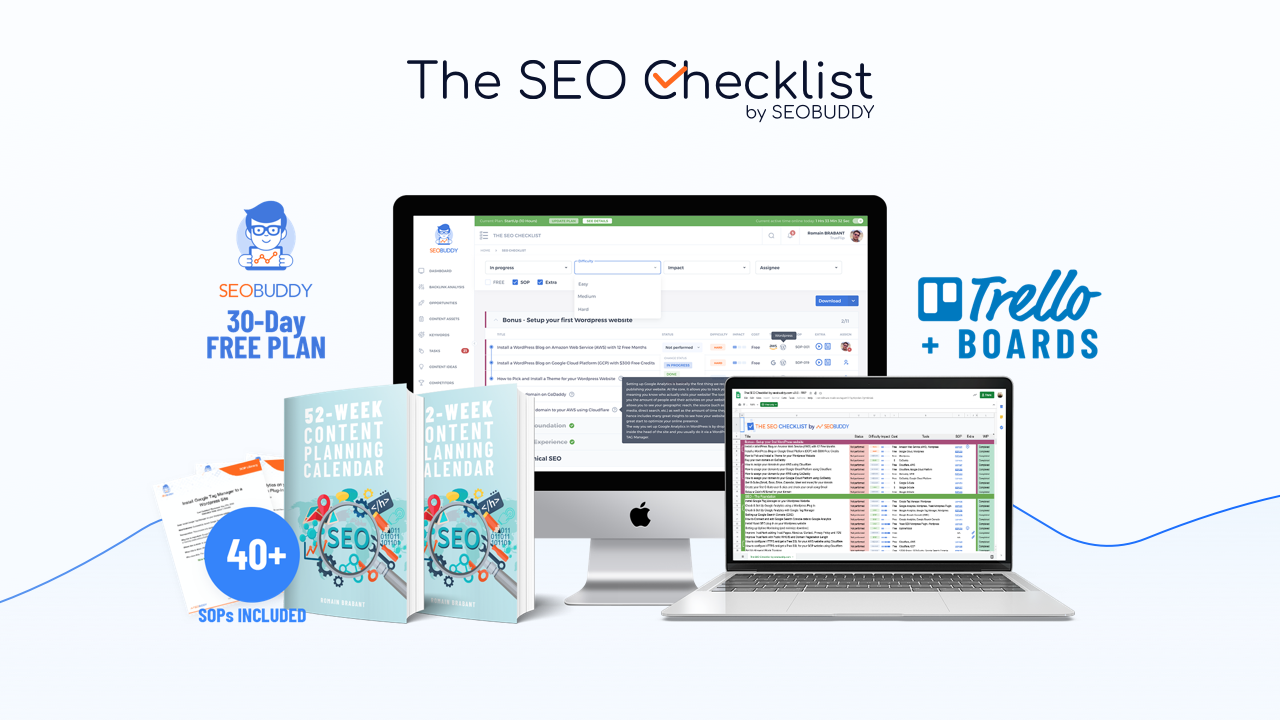
The SEO Checklist by SEOBUDDY is your roadmap to every important SEO action you need to take to optimize your website and get more organic traffic. The checklist format is what’s awesome about this product.
It’s not an epic blog post you can’t take in. It’s not a 150-page eBook you never read. But it’s not just a checklist either. It’s also 44 step-by-step process documents (SOPs) that will guide you.
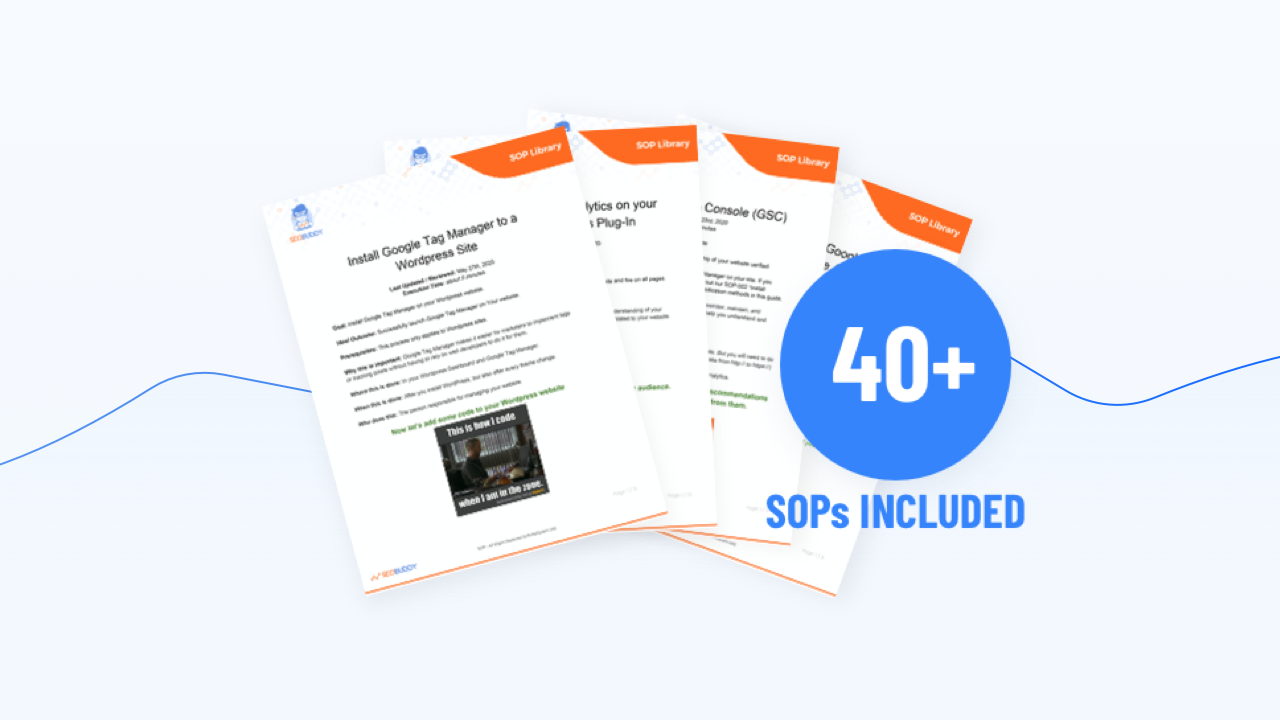
And if SOPs aren’t your thing, you’ll also have access to the best available training video on YouTube or Blog Post (extra resource).
This checklist is clearer than an eBook, and with it, one can immediately start working on SEO problems instead of wasting time on unimportant things. It’s something that gives you a laser-focused vision of what you need to be doing. It’s also a practical Google Sheets document you can work from each day.
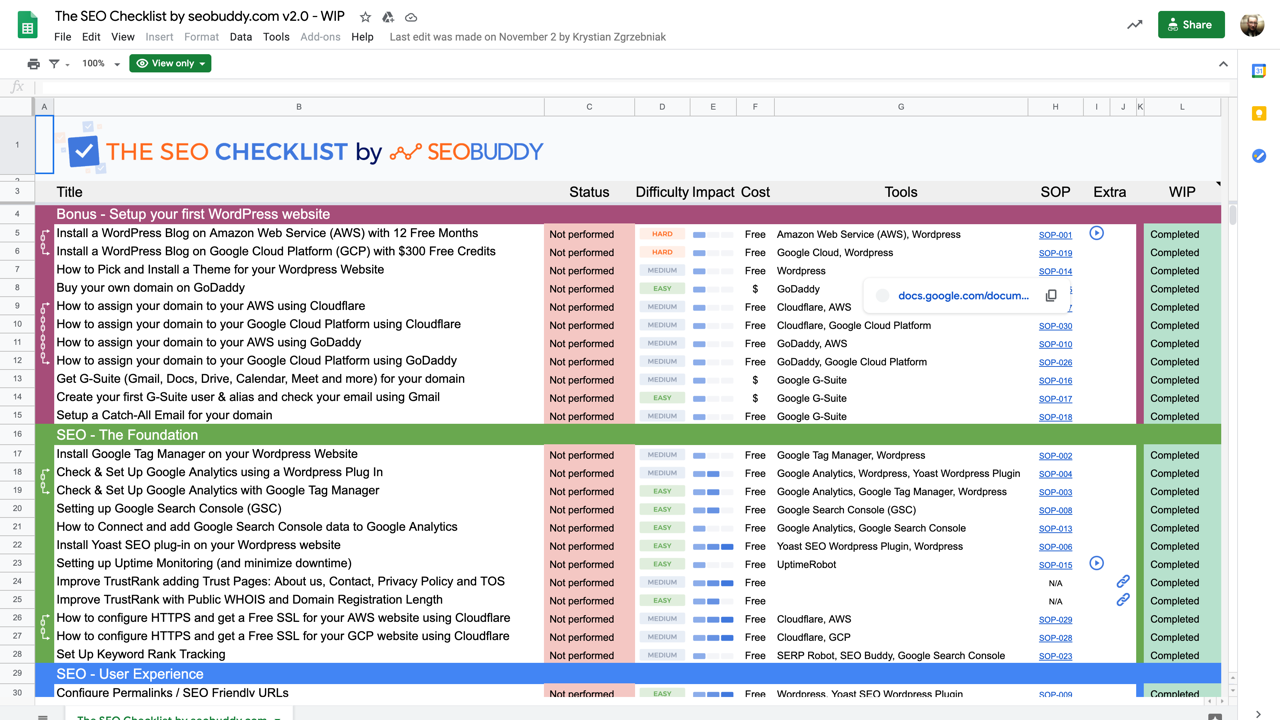
If you are interested already, feel free to get The SEO Checklist now!
If you’re newer to SEO or just struggling, The SEO Checklist helps in a few ways:
- You’ll see the bigger picture of what needs to be done to optimize and rank a site.
- You’ll be able to track what you have and haven’t done, so you don’t miss any important stuff.
- You’ll be able to follow along with super detailed step-by-step documents.
The SEO Checklist bundle includes:
- The 102-Point SEO Checklist Google Sheets Document & Web App
- 44 Step-By-Step Process Docs (Detailed Standard Operating Procedures) (Over 200 Pages)
- 50-Point Content Distribution Checklist Google Sheets Document
- The SEO Checklist eBook (PDF of 63 Pages)
- The 52-Week Content Strategy (PDF of 12 Pages)
The Information Found Within The SEO Checklist
The checklist is structured so that it’s understandable and easily digestible. It’s split up into different parts, each representing a vital segment of the SEO process.
We will now give a quick rundown of each part.
The Foundation
Every project is only as stable as its foundation, and SEO is no exception! Keeping in mind that it’s the starting point, this part mainly covers the setup and configuration process of necessary tools, which will help keep track of all relevant metrics. Be it setting up Google Search Console (GSC), keyword rank tracking, or helping you with configuring HTTPS, “The Foundation” will be of great help.
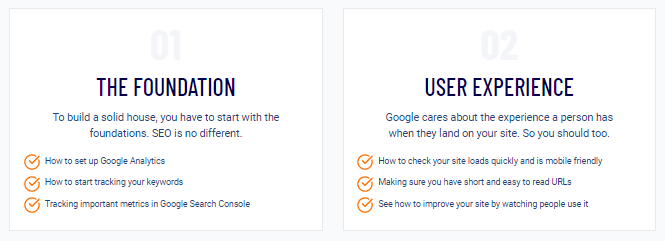
User Experience
With the number of mobile devices used nowadays, you have to make sure that your website is mobile-friendly! And let’s not forget that people neither have the time nor the patience to wait for a site to load at a snail’s pace. Luckily, one of the key points in the “User Experience” part is to pay attention to loading times.
Never forget that whether the user’s experience on your site is going to be a joyful one or not depends on how much effort you put into making it joyful. The SEO Checklist is not going to let you forget that!
Performance
After handling the user experience, you have to optimize your website’s overall performance. There are a lot of points to be addressed in regards to the performance of a website. For starters, choosing a top-performing web host is a great idea. Also, compressing and optimizing images or optimizing the database can make a great difference.
These and many more steps are listed to help you fine-tune your site and level up its performance.
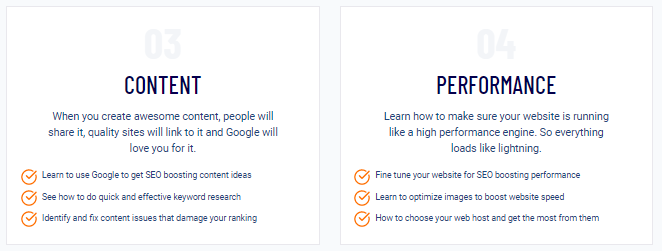
Content
Your site is only as good as the content it provides. The “Content” part contains useful steps which will help you learn to use Google to get content ideas for boosting SEO. Let’s not forget the impact keywords have when it comes to SEO. So, doing extensive keyword research just might be in your interest.
Another problem mentioned in this part is known as “keyword cannibalization”. This happens when you have different content (let’s say blog posts and/or articles) which are optimized for similar search terms. In other words, your blog posts and/or articles start competing for rank in searches, basically “eating” each other’s ranking. Of course, you have to avoid that at all costs!
Last but not least, let us mention the art of updating old content for SEO. It’s like a facelift for your old content, which helps it achieve a higher ranking in search results. Sure, you could just keep producing new content that is SEO-optimized from the get-go, but from a time investment perspective, simply modifying and updating old content by utilizing SEO practices seems like the way to go.
On-Page SEO
To understand the importance of this part, first, we have to explain the difference between a website and a webpage. For that, let us use a book as an analogy. If a website were a book, then a webpage would be a page of said book. This explanation was given because sometimes these terms are used interchangeably (even by developers), which might be confusing. With that out of the way, let’s continue explaining this part of the checklist.
Here you will learn about proper keyword positioning, which helps Google notice and value the content on your website. The proper utilization of titles and writing proper meta descriptions, both of which are heavily emphasized in this part, will help with getting more clicks in search engine results pages (SERP).
Like with everything in life, it’s important to not overdo SEO things, because more often than not, it proves to be counterproductive. The SEO Checklist reminds you not to overoptimize!
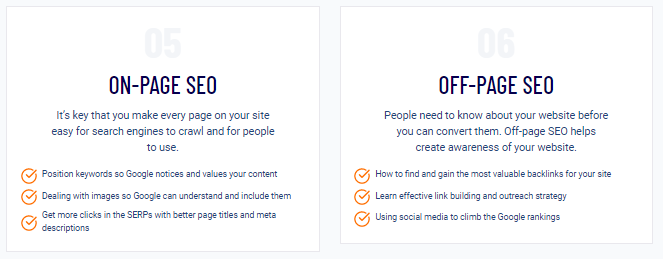
Off-Page SEO
This part teaches you how to effectively handle backlinks and learn proper strategies to achieve the greatest outreach possible. Backlinks are links to your website placed on websites of other content creators. Logically that means having good connections and collaborations with other colleagues is a high priority. It’s always good to have a systematic approach to things, and therefore, the first topic covered in the checklist is having a solid link-building strategy.
All these steps, and many more in this checklist, are meant to help you raise awareness about your site. After all, people need to know about your site before joining your fanbase and becoming regular visitors.
Technical SEO
In this part, The SEO Checklist helps you to avoid running into common technical issues which could harm the SEO efforts you have made thus far. “Technical SEO” reminds you to use redirects properly, disable irrelevant pages from being indexed, check and fix broken links, and much more. This checklist is of big help when it comes to all technical matters!
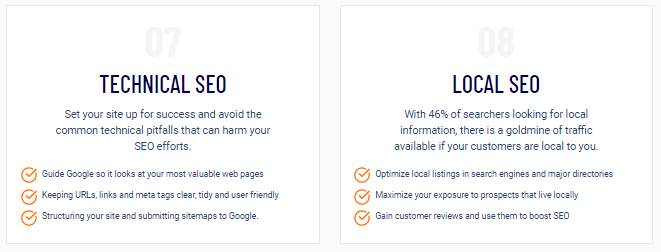
Local SEO
In this final part, you can learn how to effectively optimize local listings in major directories and search engines. That way, one can maximize their reach towards potential local clients and increase the number of customer reviews used to boost SEO.
In this part of The SEO Checklist, the recommended things to do are publishing Google posts, claiming your Google My Business listing, and optimizing listings. Then again, these are just some of the steps. For more advice, we recommend taking a peek at the checklist yourself.
Bonus – Set Up Your First WordPress Website
Here is a little bonus for those who do not know the technicalities when it comes to web development and those who only want a site to place their product or service on. These kinds of people can use WordPress and have a site up and running in no time with no serious technical knowledge required.
This bonus section is a guide meant to show you how to create a WordPress blog on popular cloud services like AWS or Google Cloud Platform, backup and restore your WordPress website, set up a catch-all email account for your domain, and much more.
An Overview of What You’ll Get
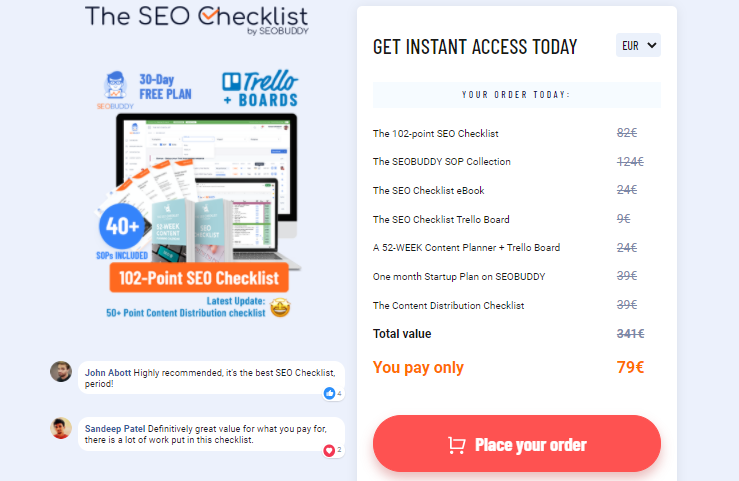
Conclusion
As you could see, The SEO Checklist by SEOBUDDY is an amazing tool with a lot of potential and power to take your website to the top of the Google search results. From the starting steps in measures of ensuring customer satisfaction, details of ensuring that no technical failures happen, all the way to the actions you can take to boost your reach, this checklist has many useful tips!
Of course, it’s the quality of content that makes people come back. But for people to be aware of your work, you first have to make some effort, so they notice you!
We hope that our article will help you make a more informed decision when it comes to choosing the right tool for boosting your business. We also want to offer a discount for all those interested in The SEO Checklist; just use the coupon code “WEBFACTORY” and get 25% off the regular price.





Comments are closed.